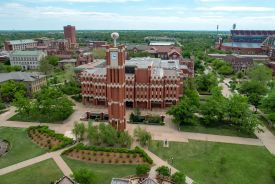New Method of Recreating Fossils Using CT Scanning and 3D Printing Will Widen Scientific Exchange of Information
ByA new method of scanning and printing 3D models of fossils could greatly help scientists analyze full dinosaur bones rather than small fragments.
According to a press release, scientists have developed a way to use computed tomography (CT) and 3D printing to accurately recreate fossilized bones. Extracting these specimens from surrounding sediment can sometimes cause it damage and the reprinting method would ensure getting a full and accurate remodel.
The researchers published a study on their work in the journal Radiology.
"The most important benefit of this method is that it is non-destructive, and the risk of harming the fossil is minimal," said Ahi Sema Issever, M.D., from the Department of Radiology at Charité Campus Mitte in Berlin. "Also, it is not as time-consuming as conventional preparation."
To test their method, the research team used the technology on an unidentified fossil from one of Berlin's major natural history museums. The fossil was one of multiple samples buried under a mound of rubble left by a WWII bombing raid. Researchers have had trouble identifying and sorting the fossils since their discovery.
The study researchers performed a CT scan on the fossil and compared it to old excavation drawings. They pinpointed its origin to a major excavation dig in Halberstadt, Germany from 1910 to 1927. The study also showed the fossil to have many fractures and other examples of deconstruction on the front rim of the vertebral body.
Issever said 3D printing and technology to make this method possible are cheaper and more accessible than ever. Remodels of fossils can be produced in several copies and distributed for a global exchange of scientific information.
"The digital dataset and, ultimately, reproductions of the 3-D print may easily be shared, and other research facilities could thus gain valuable informational access to rare fossils, which otherwise would have been restricted," Dr. Issever said. "Just like Gutenberg's printing press opened the world of books to the public, digital datasets and 3-D prints of fossils may now be distributed more broadly, while protecting the original intact fossil."
© 2025 University Herald, All rights reserved. Do not reproduce without permission.








